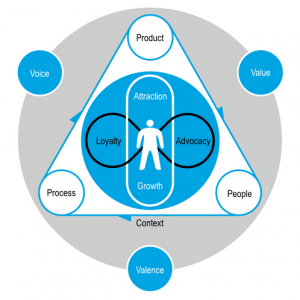Customer service to customer experience, both terms are used regarding how you manage each side of your business. The lines between the two terms often get muddied or confused with one another. What is the difference for each one and how is it possible to be present for each one?
For example, if you recently had a bad experience with a purchase or encountered issues trying to resolve a service issue, then you will most likely have had a negative impression of that brand. Why? Because the service was affected and the experience was less than pleasing.
Customer Service (CS)
According to Gartner, “customer service is responsible for retaining and extending customer relationships once a product or service is sold.”
Service refers to what happens in the human perspective and the direct – or lack of – support the customer has. Customer facing teams who are in possession of the necessary set of skills such as knowledge and patience provide customer service. The idea of good customer service is to help customers and give assistance on the product involved, along with troubleshooting and overall great experience.
Customer service is normally applied when there is an issue after sales. It is a reactive element and can be a one-time interaction. For a long time, it was perceived that working on strategies and building customer service best practices was a costly area of the business.
Customer Experience (CX)
Customer Experience is the sum of all the interactions a customer has with a company. A deeper definition by Gartner describes customer experience as “the customer’s perceptions and related feelings caused by the one-off and cumulative effect of interactions with a supplier’s employees, systems, channels or products.” This is why customer service teamwork is so important.
Experience is part of the overall view of a customer journey, from start to finish on their side and the business side. It also covers the different interactions be it customer-facing when your customer engages with your team, technology, and other touchpoints. The main aim of customer experience is to increase customer satisfaction. It also does not always happen after a purchase.
To deliver a good customer experience, it requires a proactive approach. Companies need to actively identify and correct problems that customers encounter, understanding the customer’s needs and expectations. You also don’t just need to meet these criteria in terms of product, but also in aspects that refer to emotions that a customer has towards your company.

What’s the difference?
Customer Experience is a term that covers the whole customer journey which includes customer service. However, it does not mean that customer service is everything to the customer experience. Customer experience includes all interactions with the company, through customer service, but also when interacting with the sales team in store, receiving marketing communication, using your product or service.
How is it measured?
Customer Satisfaction (CSAT) is a core metric also as companies aim to satisfy customers. As you might expect, it covers the degree to which customers are satisfied with a company. As it is usually measured after an interaction or the use of a product, it is more adapted to measuring the quality of customer service.
Net Promoter Score (NPS) is a standard indicator used by companies around the world to measure their customers’ propensity to recommend the brand. It makes it easy to compare your NPS score with that of your direct competitors and market leaders. This metric is more adapted to measure customer experience, as it follows the process from start to finish and reflects the customer’s global opinion towards the brand.
How important is it?
When Bain & Company asked organizations to rate their quality of customer experience, 80% believe they are delivering a superior experience. This is compared to only 8% of customers who believe they are receiving a great customer experience. This finding outlines a real disconnect between customers’ expectations and the actual experience they get.
According to research, reducing the effort required by customers increases the likelihood that a customer will be loyal. Failing to provide a significant experience can easily fuel disloyalty: 82% of customers stopped doing business with a company after a bad experience.
The boundaries are becoming more blurred between customer service and customer experience. What starts as a customer service request regularly encompasses other aspects of the customer experience: customers look for empathy, need to interact with other departments than customer service, look for personalized and reactive service.
How to move to a customer experience approach
Whereby a customer contacts the customer service, it can bring to customer experience; thanks to conversation history and by using CRM you can find opportunities to make the experience better.
To manage the journey of customers, it would be vital to be present on their channels of choice, as expected by 72% of them. To provide the best possible experience, companies should rely on a platform centralizing all touch points, with features such as:
- Managing interactions as conversations rather than tickets, to adapt to the conversational approach of customers and be focused on their satisfaction
- Accessing the conversation history to have a complete view of past interactions
- Relying on an open platform to integrate with CRM, chatbots and other tools to provide a faster resolution
- Routing messages to the right department and redirect smoothly to another team when needed
- Get statistics to monitor the quality of customer service (CSAT, NPS, average handling time, first contact resolution)
These features will help organizations move from a customer service view to a more global approach, encompassing all aspects of customer experience.
In one of her articles, Blake Morgan does a great summary of the differences between both areas: “Customer service and customer care often fall under the responsibility of one department, while everyone in the organization should be invested in customer experience.”
Originally published Jun 04, 2019, updated Dec 30, 2022






